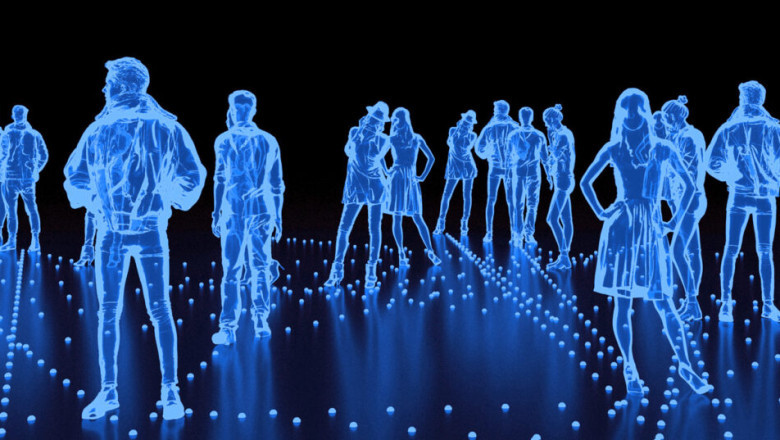views
In an era of immersive technology and augmented reality, holography stands out as one of the most captivating developments in visual media. From sci-fi films to modern advertising and medical imaging, Hologramas —as they're known in Spanish—have transitioned from fantastical illusions to practical, real-world tools. But what exactly are holograms, and how are these stunning 3D images created? This article dives deep into the science behind holography, tracing its origins, principles, and present-day applications.
What Are Holograms?
A hologram is a physical structure that diffracts light into an image. Unlike traditional photographs, which capture a flat, two-dimensional representation of a scene, holograms store information about the light’s intensity and phase. This allows a hologram to reproduce a three-dimensional image that changes as the viewer's perspective changes—much like seeing an actual object in space.
In Spanish, these three-dimensional light constructions are known as hologramas, and they are created using a technique called holography, which captures the interference pattern between two beams of light.
The History of Holography
The concept of holography was first proposed in 1947 by Hungarian-British physicist Dennis Gabor, who later won the Nobel Prize in Physics in 1971 for this invention. However, practical implementation of the idea wasn't possible until the development of the laser in the 1960s. Lasers provided the coherent light needed to create high-quality holograms.
The first successful laser hologram was made by Emmett Leith and Juris Upatnieks at the University of Michigan in 1962. Since then, the field of holography has evolved rapidly, influencing various sectors from security to entertainment.
How Holography Works: The Science Explained
Creating a hologram involves a few critical steps and concepts rooted in physics:
1. Coherent Light Source
The process begins with a laser, which emits coherent light—light waves that are in phase and have a constant frequency. This property is essential for recording the fine interference patterns that make holography possible.
2. Beam Splitting
The laser beam is split into two paths using a beam splitter:
-
Reference Beam: Directed straight onto the recording medium (e.g., a photographic plate or digital sensor).
-
Object Beam: Shined onto the object being imaged; the light reflects off the object and also hits the recording medium.
3. Interference Pattern
When the reference and object beams meet at the recording surface, they interfere with one another, producing a complex pattern of light and dark fringes. This interference pattern encodes the object's 3D shape, depth, and texture.
4. Recording and Reconstruction
Once the interference pattern is recorded, it can be illuminated again with the reference beam or similar light to reconstruct the original 3D image. The human eye perceives this reconstructed light field as a full-color, three-dimensional image—a holograma.
Types of Holograms
There are various types of hologramas, each with different properties and uses:
1. Transmission Holograms
Viewed with laser light shining through them, they offer the highest quality and depth. Often used in scientific applications.
2. Reflection Holograms
Viewed in regular white light, these are common in art and display applications. They reflect light back to the viewer’s eyes.
3. Digital Holograms
Created and displayed using digital technology, allowing dynamic or interactive 3D visuals. These are gaining popularity in modern computing and entertainment.
Applications of Holography
Holography has transcended its origins as a scientific novelty to become a vital part of various industries. Here's how hologramas are used today:
1. Medical Imaging
3D imaging provides doctors and surgeons with detailed views of organs, tissues, and surgical paths.
2. Data Storage
Holographic data storage systems promise higher density and faster access speeds than conventional optical media.
3. Security and Authentication
Many credit cards, passports, and product labels use holograms to prevent counterfeiting.
4. Entertainment and Art
From live performances featuring holographic avatars to museum exhibits, holography enriches visual storytelling.
5. Education and Training
Immersive holographic environments help students and professionals grasp complex concepts, from anatomy to engineering.
The Future of Hologramas
As technology advances, the quality and accessibility of hologramas continue to improve. Innovations in AI, optics, and display technologies are paving the way for volumetric holograms, holographic smartphones, and even holo-conferencing, where people appear as 3D projections in remote locations.
Companies like Microsoft (with HoloLens), Looking Glass Factory, and Voxon Photonics are already pushing the boundaries of what's possible with holography. In the near future, we might find ourselves interacting with holograms in our daily routines, from shopping and socializing to learning and working.
Conclusion
Holography is not just a scientific curiosity—it’s a powerful technology reshaping how we visualize and interact with information. Whether used for medical breakthroughs or immersive entertainment, hologramas represent a fusion of art, science, and imagination. As the technology continues to evolve, so too will the ways we perceive and experience reality.














Comments
0 comment